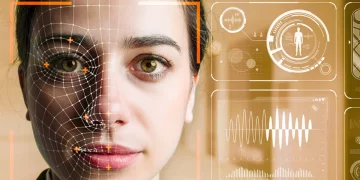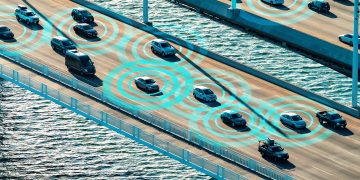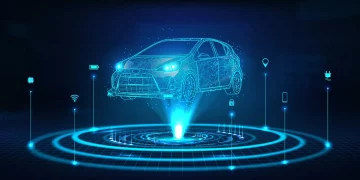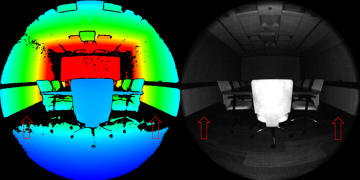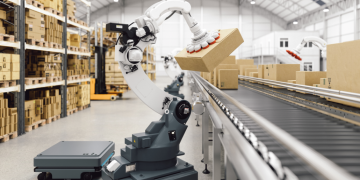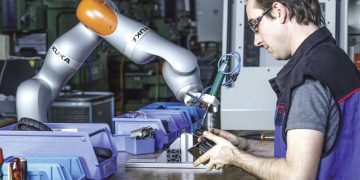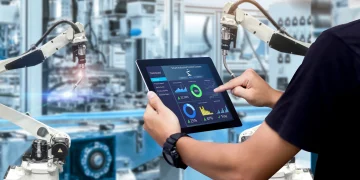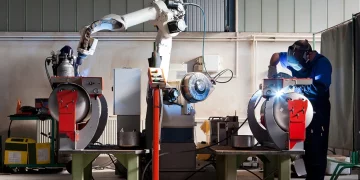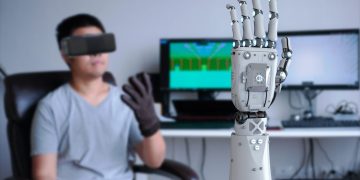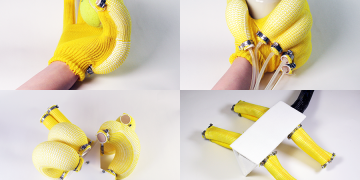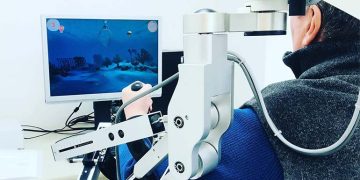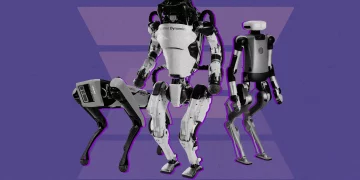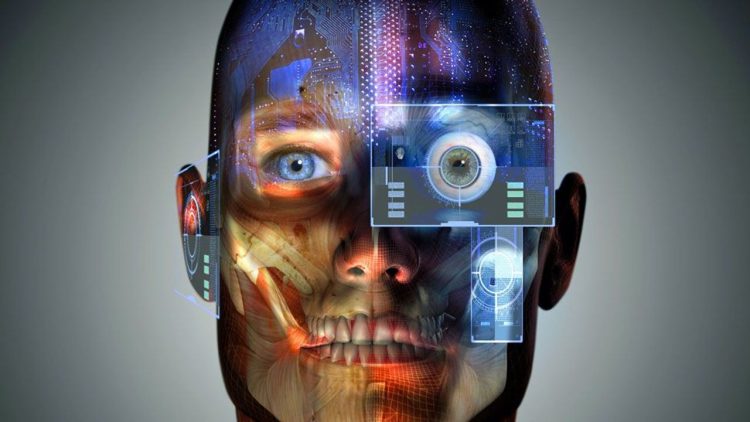Introduction
As robotics continues to evolve and integrate into various sectors of society, the privacy of users becomes a significant concern. Robots are increasingly embedded with advanced technologies such as artificial intelligence (AI), sensors, and real-time data processing capabilities. These capabilities enable robots to interact with their environment, gather data, and perform complex tasks. However, these same advancements raise the ethical dilemma of how to ensure that these systems respect and protect user privacy.
The ability of robots to collect, store, and analyze vast amounts of personal data—such as biometric information, daily activities, preferences, and even emotional responses—has the potential to transform industries like healthcare, customer service, and home automation. While these technologies can bring significant benefits, they also create a new set of challenges related to data privacy, surveillance, and the potential for misuse.
This article will explore how to ensure that robotic technologies adhere to ethical standards in protecting user privacy, outlining the risks involved, the regulatory and technological solutions, and the responsibilities of various stakeholders. The goal is to propose a balanced approach that enables innovation without compromising privacy rights.
1. The Privacy Risks Inherent in Robotic Technology
Robots are increasingly capable of gathering sensitive data from users and their environments. This data, which often includes personal identifiers, behavioral patterns, and environmental information, can be both invaluable and deeply intrusive. To understand the privacy risks associated with robots, it is important to explore the key ways in which robots collect and utilize data:
a. Data Collection Mechanisms
Robots equipped with sensors, cameras, microphones, and other data-gathering tools are capable of collecting detailed information about the individuals they interact with and the environments in which they operate. Some common data collected by robots includes:
- Personal Identifiers: Robots can capture names, addresses, and even biometric data such as fingerprints or facial features.
- Behavioral Data: Robots can track user actions, preferences, routines, and even emotional states by monitoring gestures, voice tone, and movements.
- Environmental Data: Robots can map users’ living spaces, workplaces, or other private environments, providing them with detailed knowledge about the physical space in which the user lives or works.
b. Data Storage and Security Concerns
Once this data is collected, it needs to be stored and processed, often in cloud systems or on local servers. The storage of large amounts of sensitive personal data presents significant privacy risks. For example:
- Unauthorized Access: If proper security protocols are not implemented, sensitive user data can be vulnerable to breaches or hacks.
- Long-Term Storage: Data retention policies must be carefully defined to ensure that user data is not stored indefinitely or used for purposes that the user did not consent to.
- Misuse of Data: Unauthorized sharing of data with third parties or the use of data for commercial purposes without user consent can violate privacy expectations.
c. Surveillance and Tracking
Robots, especially those equipped with cameras or location-tracking systems, are capable of continuously monitoring the user’s actions. This constant surveillance, while useful for improving robotic performance and user experience, raises serious concerns about unwarranted privacy invasions. Examples of such surveillance risks include:
- Unauthorized Monitoring: In home automation systems, for instance, robots could be monitoring private activities, such as conversations or personal interactions, without the user’s awareness or consent.
- Behavior Profiling: Continuous data collection can lead to the creation of detailed behavior profiles that could be exploited for targeted advertising, psychological manipulation, or even criminal profiling.
2. Ethical Issues Surrounding Privacy in Robotics
The intersection of robotics and privacy involves complex ethical issues, as the development of robotic technology brings both societal benefits and personal risks. Some of the primary ethical concerns include:
a. Informed Consent
Informed consent is a foundational principle of ethical data usage. Users must be fully aware of the data being collected by robots, how it is being used, and who has access to it. Without proper transparency and informed consent, robots could potentially infringe on the autonomy and privacy of individuals.
- Problem: Many users are unaware of the extent to which robots collect data and may not fully understand the implications of their data being used for various purposes.
- Solution: Developers should ensure that users are explicitly informed of the data collection practices through easily understandable privacy policies and consent forms. Users should also be able to opt-out or manage their privacy settings at any time.
b. Data Ownership and Control
An important ethical dilemma is determining who owns the data collected by robots. Is it the user, the company that develops the robot, or perhaps a third-party service provider? The rights to personal data are not always clearly defined in current regulations, which can lead to disputes over data ownership.
- Problem: Users may unknowingly relinquish control over their data when using robots, particularly if they fail to read privacy policies or understand the full extent of data collection practices.
- Solution: Clear guidelines must be developed to ensure that users retain ownership over their personal data and that data is only shared or processed with explicit permission. Data collection should be minimized to what is absolutely necessary for the robot to function.
c. Accountability for Privacy Breaches
When a privacy violation occurs, it is essential to hold the responsible parties accountable. Whether the breach is due to a hacker, negligence in data security, or misuse by a third-party vendor, accountability must be clearly defined.
- Problem: The parties responsible for privacy violations are often difficult to identify, especially when data is processed across multiple platforms or entities.
- Solution: Establish legal frameworks that clearly define accountability in cases of privacy violations. This includes setting out the responsibility of robot manufacturers, developers, and data processors to ensure data protection and mitigate risks.
d. The Balance Between Convenience and Privacy
While robotics can enhance convenience—automating household chores, providing healthcare assistance, and improving work processes—the convenience often comes at the expense of privacy. Striking the right balance between these two factors is a central ethical challenge.
- Problem: Users may be willing to sacrifice some degree of privacy for the perceived benefits that robots provide, leading to a slippery slope where privacy concerns are increasingly ignored.
- Solution: Designing robots that respect privacy by default is essential. This includes data anonymization, the use of edge computing (where data is processed locally rather than in the cloud), and providing users with easy-to-use controls to manage their privacy preferences.

3. Technological Solutions to Safeguard User Privacy
In response to these privacy concerns, several technological solutions can be integrated into robotic systems to protect user data and ensure ethical practices:
a. Privacy by Design
Privacy by design is an approach that ensures privacy is integrated into the design and architecture of robotic systems from the outset. Developers should prioritize privacy protection in the early stages of system design and throughout the development lifecycle. This involves:
- Data Minimization: Collecting only the data necessary for the robot’s function and discarding non-essential information.
- Anonymization: Ensuring that any personal data collected is anonymized or pseudonymized to prevent identification.
- End-to-End Encryption: Securing data using strong encryption protocols to prevent unauthorized access.
b. Edge Computing and Local Data Processing
Edge computing involves processing data on the robot itself rather than sending it to a central server or cloud-based system. By performing calculations and storing data locally, robots reduce the amount of sensitive data that is transmitted over the internet, thereby minimizing privacy risks.
- Benefit: Users have greater control over their data, as it does not need to leave the device, and the potential for data breaches is reduced.
- Solution: Manufacturers can prioritize edge computing for robots used in sensitive environments (e.g., healthcare, home automation), where privacy is especially important.
c. Enhanced Data Security
Robots should incorporate advanced data security measures to prevent unauthorized access and protect user data from potential breaches. This includes:
- Multi-Factor Authentication (MFA): Ensuring that access to personal data is secured by requiring multiple verification methods.
- Data Encryption: Encrypting data both in transit and at rest to prevent unauthorized access.
d. Ethical AI Algorithms
AI algorithms driving robotic decision-making can be designed with ethical constraints that prioritize privacy. For example, robots can be programmed to only gather data that is essential for their task and to discard or anonymize sensitive data after it is processed.
- Solution: Developers should use ethical AI frameworks that guide data collection, processing, and storage practices, ensuring they align with human rights and privacy standards.
4. Regulatory and Policy Measures
Governments and regulatory bodies must step in to establish laws and guidelines for the ethical use of robots and their data collection practices. These regulatory measures should include:
a. International Privacy Standards
The global nature of robotics and AI technology requires international privacy standards that ensure consistency in how user data is protected worldwide. Existing frameworks like the General Data Protection Regulation (GDPR) in Europe could serve as models for regulating privacy in robotic systems.
b. Data Protection Laws
Countries must develop specific data protection laws for robotics, taking into account the unique characteristics of robots’ data collection and processing. These laws should mandate strict privacy protocols, transparency, and user rights over their data.
c. Ethical Oversight
Independent ethical committees or regulatory bodies should oversee the development and deployment of robotic technologies. These bodies can audit companies, review privacy policies, and ensure compliance with privacy laws.
Conclusion
As robots become an increasingly integral part of our lives, it is essential that developers, regulators, and society as a whole prioritize privacy protection. Through transparency, user control, data security, and ethical AI, we can ensure that robotic technologies serve to improve lives without compromising fundamental privacy rights. By adopting a proactive approach to ethical concerns and privacy, we can harness the potential of robotics while safeguarding our autonomy and dignity in an increasingly digital world.






